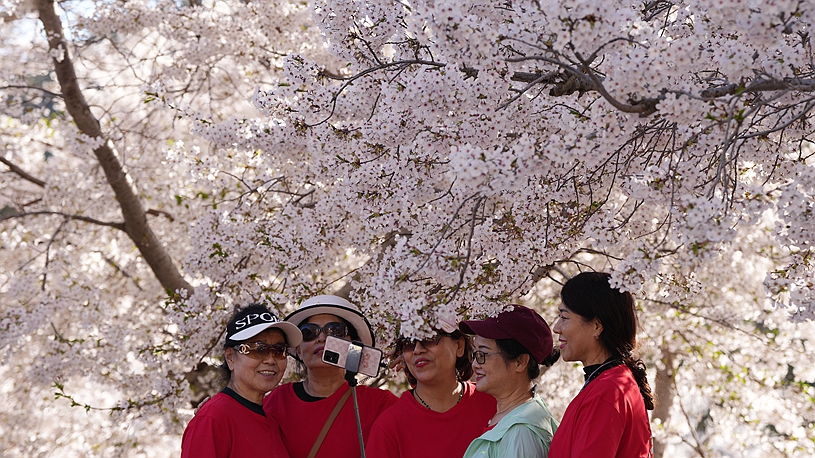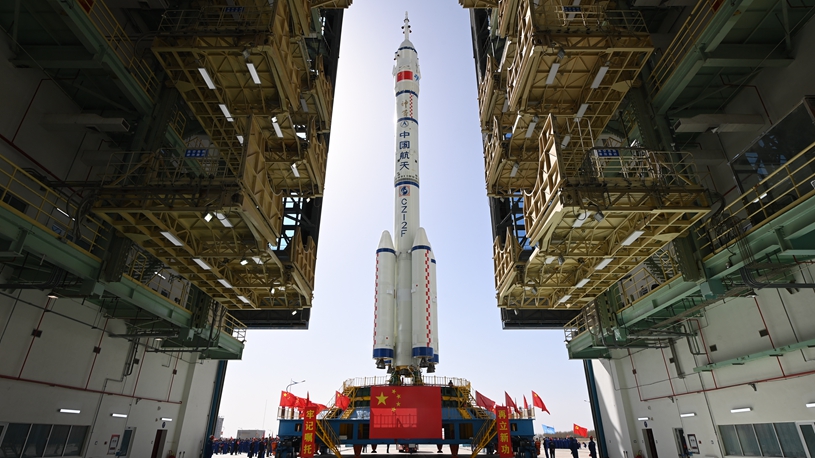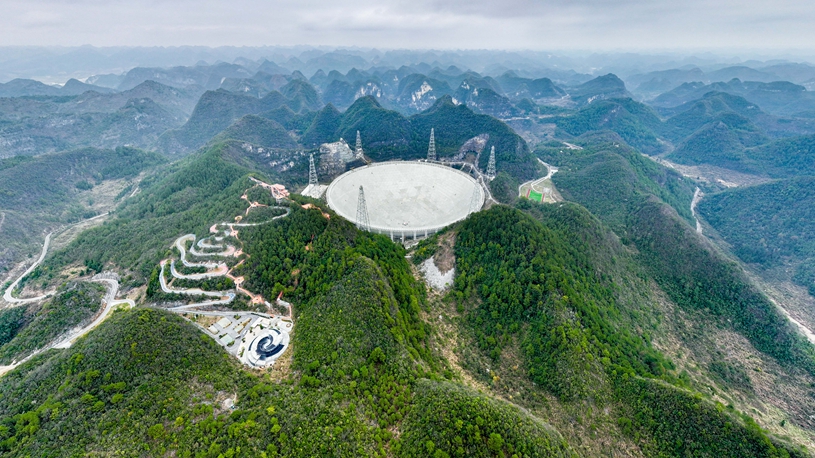by Xinhua writer Zhang Xu
BEIJING, April 18 (Xinhua) -- Just recently, I found myself walking by the Liuyanghe River at about 7:00 p.m., anticipating a unique sort of show.
Soon, groups of people started setting off fireworks by the river bank, then others on the surrounding hills. Finally, the entire city was covered in light and sound. It was not a weekend or a holiday. The locals were simply doing this as part of their daily lives.
Liuyang, a county-level city in Changsha, capital of central China's Hunan Province, is deemed the world's fireworks hub.
To the Chinese people, fireworks have always been an indispensable part of festivals, representing joy and prosperity. The development of the fireworks industry has been intertwined with the lives of merchants and artisans, and fireworks are naturally associated with commercial vitality.
After China optimized the COVID-19 response, the role of fireworks was re-emphasized, and many cities restarted large-scale fireworks displays that had been suspended for years. Liuyang entered an unexpected golden period.
Liuyang is not the only core production area for fireworks, with other major production centers including Liling in Hunan Province, and Shangli and Wanzai in Jiangxi Province. These places still share legends about the invention of firecrackers by Li Tian, a monk in the Tang Dynasty (618-907).
It is said that Li filled bamboo with gunpowder, and invented firecrackers in order to drive out evil spirits.
After the reform and opening up, the competition among counties and cities for the fireworks market intensified, with "nine out of ten families producing fireworks" somewhere, leading to huge safety problems.
A nationwide regulation on fireworks, implemented in 2006, stopped the industry's rampant expansion and chaotic competition. Most areas across the country regarded the fireworks industry as outdated and shut it down.
In contrast, Liuyang has developed its own strategy for updating its fireworks industry within a broader picture of modernization and development.
To address pollution and safety concerns, a large number of the city's outdated production operations were phased out through mandatory measures, while reforms were carried out on the supply side and production standards were established.
Meanwhile, industrial expansion and diversification have largely improved the quality of Liuyang's economic development. In recent years, more high-tech and intelligent industries have grown rapidly and replaced fireworks as Liuyang's leading industry.
In 2023, the GDP of Liuyang was 170 billion yuan (about 23.94 billion U.S. dollars), with fireworks making up less than 20 percent. This percentage figure is expected to drop further in future.
The main role of the industry is no longer to support Liuyang's overall economy, but to make a significant contribution to local incomes.
At an international trade center for fireworks in Dayao, a town in Liuyang, visitors were able to watch various fireworks. I scanned the QR codes on several firework casings, and watched the dazzling displays on my phone screen, which were truly a sight to behold.
Zhang Xianqian, director of the Liuyang Fireworks Industry Development Center, explained that the city now has over 1,000 enterprises across the whole fireworks industrial chain -- including production, sales, ignition and related businesses -- employing over 300,000 people.
Last year, the total output of Liuyang's fireworks industry reached 50.89 billion yuan, and fireworks exports went up by 27 percent in the first two months of this year, he said.
While the traditional fireworks industry has laid a solid foundation for Liuyang, the city's economic development has been bolstered by emerging industries, including electronic information, bio-medicine, intelligent equipment, and new materials. It is aiming for a higher GDP target this year, after a 5 percent growth in 2023.
About 50 km from Dayao lies the Liuyang Economic and Technological Development Zone. The 35-square-km zone hosts over 300 industrial enterprises above the designated size, such as Lens Technology, HKC Changsha, and Yanjin Shop Food Co., Ltd., with an industrial output of 74.33 billion yuan last year.
At the headquarters of Yanjin Shop Food Co., Ltd. in Liuyang, I saw a long queue of job applicants. As a leading snack enterprise, Yanjin raked in a revenue of 4.16 billion yuan, with a net profit of 506 million yuan, last year, a year-on-year increase of 67.76 percent. The net profit is expected to soar over 30 percent in the first quarter of this year.
"We also provide OEM services for other brands, and our production lines almost never stop," said Yang Linguang, executive deputy general manager of the company. The company always adheres to standardized production and sales, and has seen business expanding, resulting in some labor shortages, said Yang.
To some extent, Liuyang is an example of a city seeking industry breakthroughs within an internal circulation economy. However, compared to other industries, the traditional and emotional values of fireworks make them irreplaceable.
Fireworks show director Huang Cheng is well-known in the industry. In his view, "Fireworks are the best emotional products."
Standing by the river, I was entranced by the show, as another salvo of fireworks burst in front of me. The starburst, the cracking sound, and the odor of burnt gunpowder rekindled my childhood memories of setting off fireworks with beloved ones. I was left in no doubt of the enduring value of this traditional form of celebration. ■












